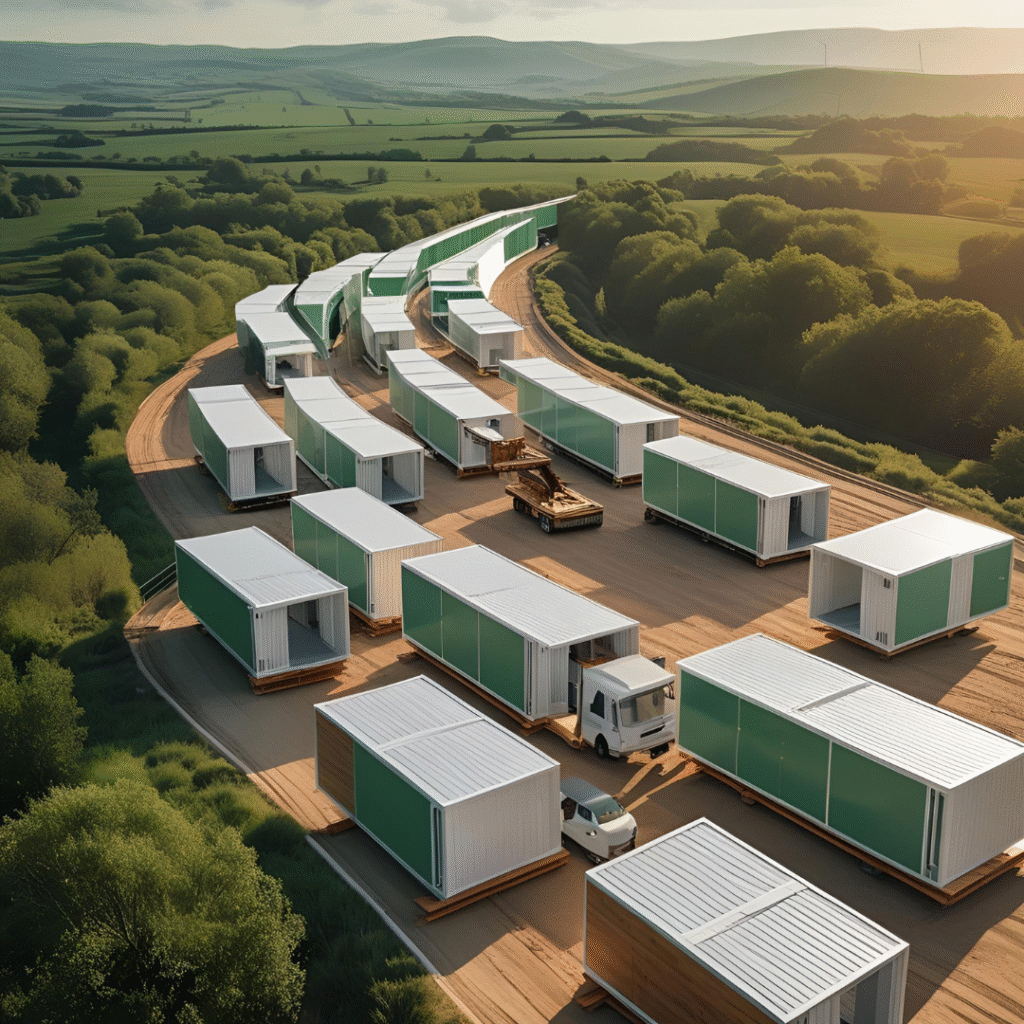Hook: Enough with the guesswork! This post reveals everything people don’t tell you about prefab homes — from hidden costs to surprising market value. Get ready to bust myths and discover what really makes modular living the future of housing.
✅ 1️⃣ “Are Prefab Homes Always Cheaper?” – The Truth That May Shock You!
Many people assume prefab homes are automatically cheaper, but the real story is more complex. While the initial price can be lower, the final cost depends on factors people often ignore: module transportation, land conditions, foundation type, premium materials, and custom finishes can all increase the budget.
Plus, a modular project requires detailed logistics that aren’t always cheap. For example, remote land or narrow roads can make module delivery more expensive, requiring special permits or cranes.
On the flip side, prefab systems can reduce material waste and construction time, which makes the final cost-benefit balance attractive. Still, do your homework: compare suppliers, plan your logistics, check land topography, and don’t forget local taxes.
Bottom line? Prefab can be cheaper — but it’s not guaranteed. Every project is unique, so if you plan well and understand the hidden costs, you’re ahead of the game.
✅ 2️⃣ “They’re Weak and Won’t Last?” – Myth Busted!
A persistent myth is that prefab homes are fragile. The reality is the opposite! Countries with harsh climates — like Canada, Sweden, and Norway — have used modular housing for decades because it’s so robust.
Factory-made components guarantee precise fits, efficient insulation, and high resistance to heavy rain, snow, and strong winds. Materials like galvanized steel, treated wood, and engineered panels are designed to last as long as — or longer than — conventional homes.
Another bonus: prefab homes are often easier to maintain because modules can be replaced or repaired individually, without messy demolitions.
So next time you hear that prefab homes “don’t hold up,” set the record straight: they absolutely do — when built to proper standards.
✅ 3️⃣ “No Permits Needed? Get Ready for Fines!” – The Red Flag No One Talks About
Many people think you can just order a prefab home, drop it on land, and you’re done. The truth? Any residential construction — including prefab — needs permits and approved blueprints. Skipping this step can lead to huge fines or even demolition orders.
Each city has its own rules: soil studies, licensed architectural plans, zoning checks, and sometimes environmental clearances. Ignore this, and you risk a nightmare down the road.
Pro tip: choose a reputable builder who offers help with paperwork. It saves time, prevents mistakes, and ensures your dream home is legal — and more valuable if you ever want to resell or get financing.

✅ 4️⃣ “Prefab Homes Have No Style?” – The Creative Truth!
Some still believe prefab homes are boring or cookie-cutter. But modern modular designs prove the opposite: customization is actually one of their biggest strengths.
You can choose everything from floor plans to facades, finishes, smart automation, green roofs, and solar panels. Some architects create stunning modular designs that blend bamboo, containers, engineered wood, and lightweight steel.
Bonus: modular flexibility makes expansions easy. Start small, then add rooms or features later without major renovations.
So next time someone says “all prefab homes look the same,” just show them the jaw-dropping designs that combine comfort, style, and sustainability.
✅ 5️⃣ “Any Plot of Land Will Work?” – The Costly Mistake Beginners Make
A fatal mistake is thinking any land will do for a prefab home. In reality, the plot is crucial! Uneven, unstable, or hard-to-access land may require expensive foundations or tricky module transport — blowing up your budget.
Beyond a topography study, logistics matter: narrow roads, bridges, trees, or overhead wires can block delivery trucks and cranes.
Before buying land, bring in an engineer to check technical feasibility. You’ll avoid nasty surprises, delays, and hidden costs.
✅ 6️⃣ “No Warranty for Prefab Homes?” – Don’t Fall for This Lie!
Classic myth: “Prefab homes have no warranty!” Not true. Serious companies offer structural warranties ranging from 5 to 10 years. This covers manufacturing defects and technical support for maintenance.
Of course, pick reputable builders, check contracts, and get everything in writing. A warranty gives you legal peace of mind and protects your investment.
Pro tip: look for projects that follow ISO standards or have sustainability certifications. It boosts quality and buyer trust.
✅ 7️⃣ “Transporting the Modules Is a Breeze?” – The Logistics Drama No One Tells You About
Transport is often overlooked. To reach your plot, the modules must travel on roads, through neighborhoods, and around obstacles. Every corner, bridge, or low-hanging wire can be an unexpected headache.
Sometimes, special permits, escorts, cranes, or temporary road closures are needed — and these costs can add up fast.
Planning ahead and choosing a builder experienced in logistics can prevent delays, fines, and wasted money.
✅ 8️⃣ “Prefab Equals Container Home?” – Don’t Fall for This Confusion!
Another huge myth: “Prefab means container home.” Wrong! Shipping containers are just one prefab method. There are modular houses built from engineered wood panels, light steel frames, cellular concrete, bamboo, and even 3D-printed structures.
Each technology has its own standards, costs, and pros and cons. Containers are great for upcycling, but other structures may offer better acoustic insulation, thermal comfort, or long-term maintenance.
Knowing your options helps you pick the best fit for your lifestyle.
✅ 9️⃣ “Prefab Homes Devalue the Land?” – The Money-Making Myth!
People often think prefab homes hurt land value. In reality, they’re increasingly attractive to buyers — especially in tourist areas, farms, or growth regions.
Why? They combine faster build times, lower environmental impact, and unique aesthetics. Well-documented modular homes with proper warranties are easier to finance and resell.
So prefab homes can actually boost your property’s value — busting this outdated myth.
✅ 🔟 “You Can Just Move It Anywhere Anytime?” – Think Twice Before You Dream!
A common misconception is that prefab homes are portable like RVs. That’s half true at best. Only specific models — like tiny houses on wheels — are truly mobile.
Most prefab homes are designed to be fixed. Moving them means dismantling modules, hiring cranes, securing permits, transporting, and then reassembling — which can be expensive and time-consuming.
Plan your location carefully and think long-term.

✅ 1️⃣1️⃣ 💥 “Banks Didn’t Finance Prefab Homes? Here’s Why That Changed!”
For a long time, the biggest hurdle for prefab homes was financing. Many banks wouldn’t touch modular projects due to regulatory uncertainty or structural risk. But those days are over!
With the rise of modern prefab and green construction, banks had to adapt. Today, major institutions offer specific credit lines for prefab homes with proper permits and certifications. For example, in a recent Exame Invest article, Itaú Unibanco highlighted new green loans that specifically support modular homes with sustainability seals.
Why the change? Because modern buyers want fast, resource-efficient homes with a smaller carbon footprint. And well-documented, warrantied homes pose less risk of default — making the investment safer for banks.
If anyone tells you “you can’t finance a prefab,” you now have proof that you can — and you might even get better rates with a green loan!
✅ 1️⃣2️⃣ “Real Stories: Once You Live in One, You’ll Never Go Back!”
Nothing convinces better than real-life stories. Families who live in prefab homes rave about the fast build time, minimal construction headaches, and better quality of life. Thermal and acoustic comfort, smart design, and the pride of owning a sustainable home make it worth every penny.
Owners also love watching their property value appreciate — the opposite of what skeptics believe. In the end, people who try prefab living rarely want to go back to traditional construction.







